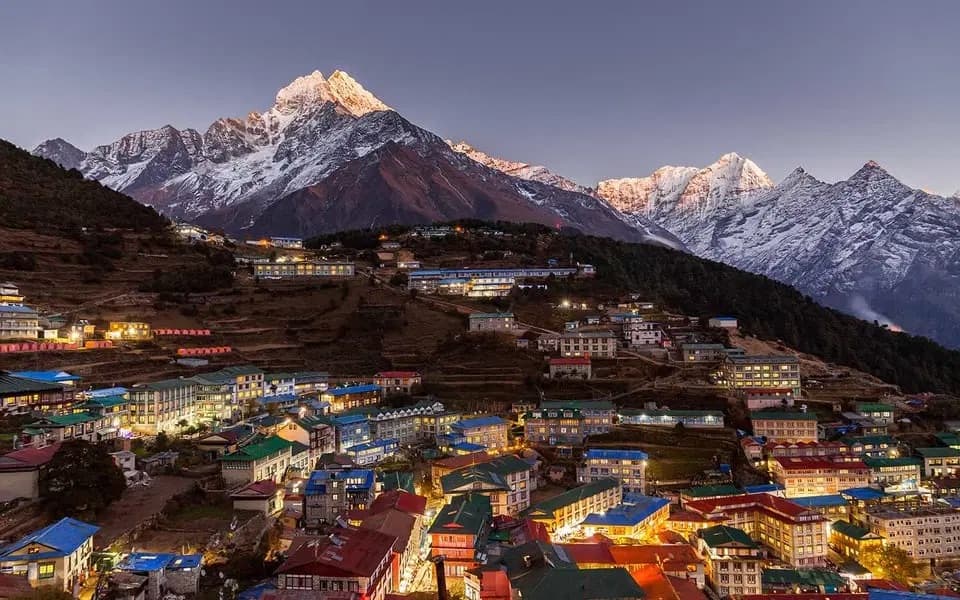Everest Base Camp trekking is not only trekking alone; it's also a hospitality adventure in this region of the world, which also attracts trekkers. This leads to the issue of accommodation along the way to EBC. From cozy teahouses right in the heart of Sherpa villages to modest high-altitude lodges with stunning Himalayan vistas, the Everest Base Camp Trek possesses a stay experience unlike any other, an experience that you will never forget.
Do not expect a luxury teahouse with all kinds of facilities on the EBC trail. You’ll be getting basic facilities, but the hospitality served by the local Sherpa people makes the accommodation better than anything. You’ll be amazed by the warmth, hospitality, and comfort offered by the remote corners of the Khumbu region.
Here’s everything you need to know about where you’ll sleep on the trail:
Teahouses
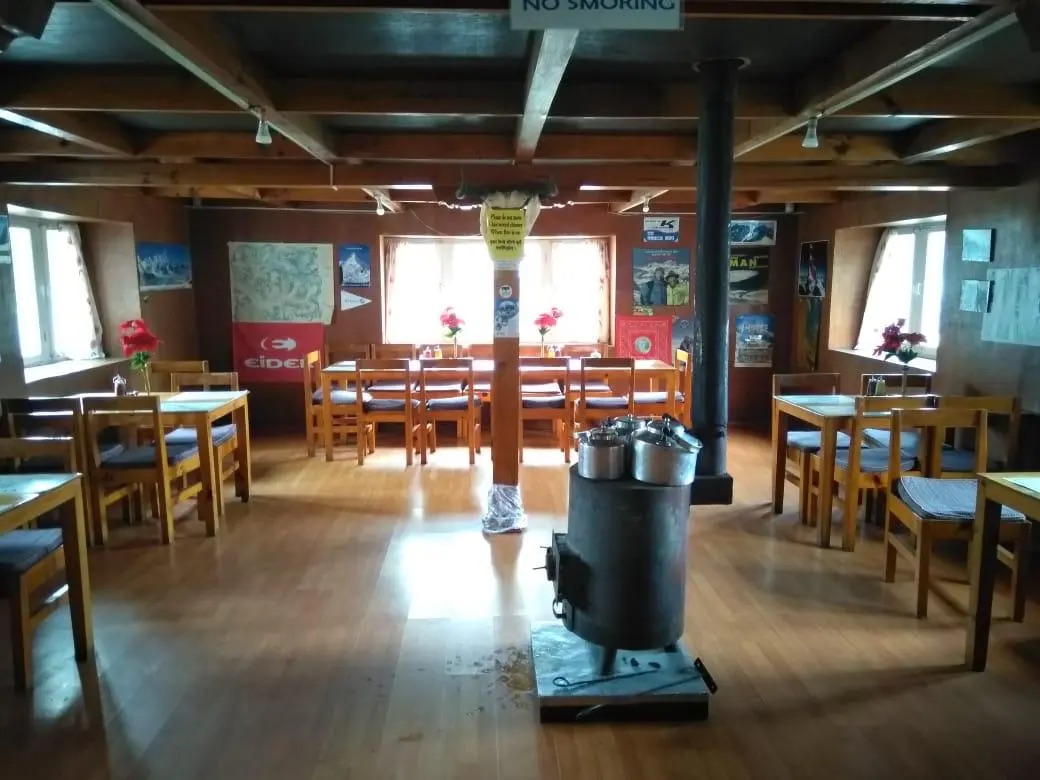
Teahouses are the most common accommodation places found while trekking to Everest Base Camp. They are a standard form of accommodation run by a family that offers very basic yet very comfortable facilities. They offer simple rooms and basic meals to trekkers. Basically, rooms and the bathroom are shared. The room has a wooden bed with a mattress, a blanket, and a pillow. There will be electric blankets in some places or a heater to make it warm. They may cost you extra for the heater, but you’ll get such facilities. There is very little chance of hot water facilities as you ascend higher; if you ask for it, you will be served, but it costs extra. The main highlight of the teahouse is its dining hall. It’s a wide-open big room where all the trekkers sit together to eat in a Nepali style. You all sit together and can have a conversation with fellow trekkers.
The per-day cost ranges between $10 to $15 per person, depending on the location and level of service you get.
Lodges/Hotels
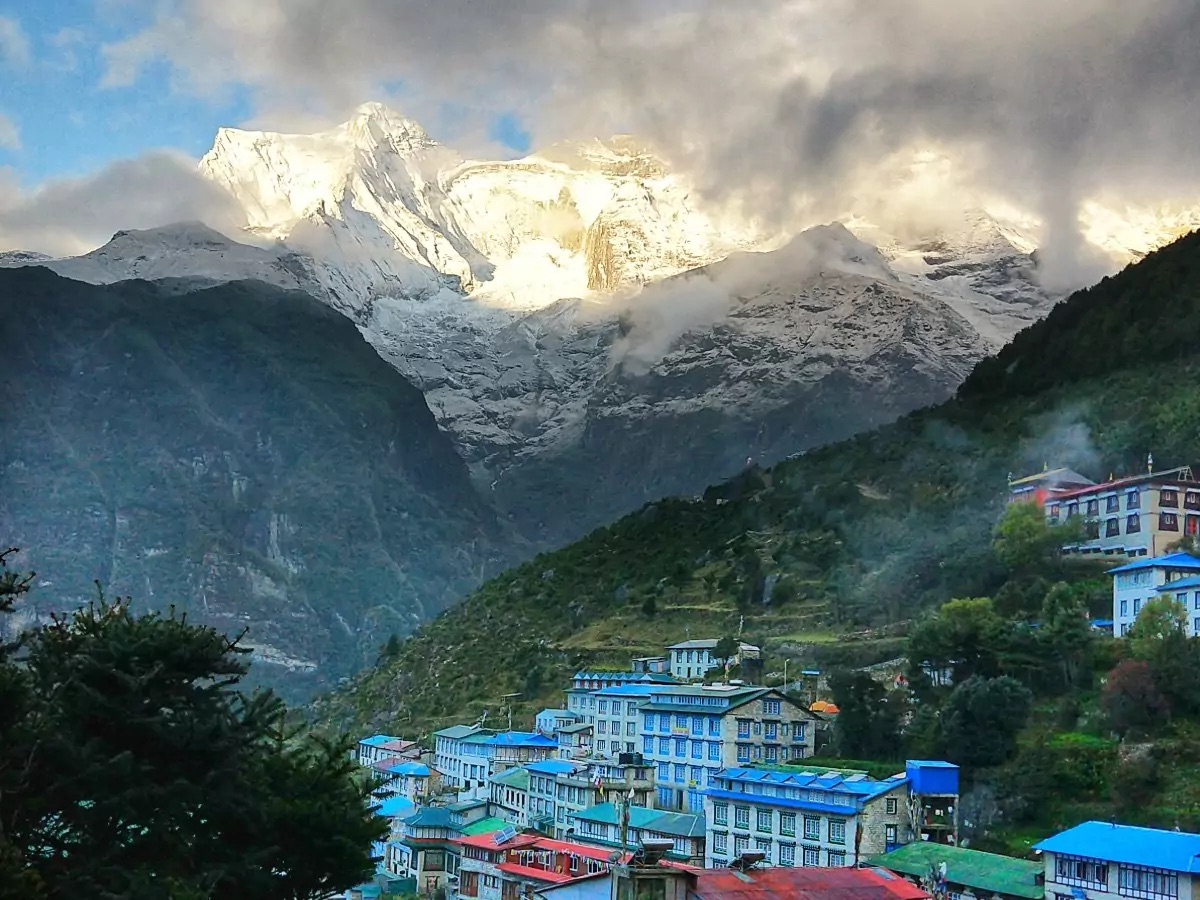
Lodges/Hotels are also found on the EBC trail. They also offer basic yet comfortable facilities. You’ll find basic lodges to luxury lodges on the trail. You get luxury hotels in lower elevations like Lukla or Namche, but as you ascend higher, the facilities may decrease, but you’ll get comfortable staying in places.
Lukla, Phakding, and Namche Bazaar have lodges/Hotels; trekkers can stay in cozy lodges like Yeti Mountain Home, Namaste Lodge, or Everest Summit Hotel. Trekkers are offered all amenities, including a private bed with a bathroom, electric blankets, a hot shower, and internet. As the trekkers make their way to Tengboche and Dingboche, the facilities are less than at Lukla and Namche, but still, you have warm rooms in renowned hotels like Tashi Delek Lodge and some other lodges. As the altitude gets higher, at Lobuche and Gorakshep, the facilities are basic yet comfortable. There are no such facilities as hot showers, private rooms, and all, but you’ll experience the best facilities with great views of the surrounding Himalayas.
On the descent, Pheriche offers one of the best places, like the Himalayan Hotel and Edelweiss Lodge, for a stay. While luxury is limited to the lower elevations, the warmth and hospitality of these mountain lodges are a memorable part of the EBC trekking experience.
Tent Camping
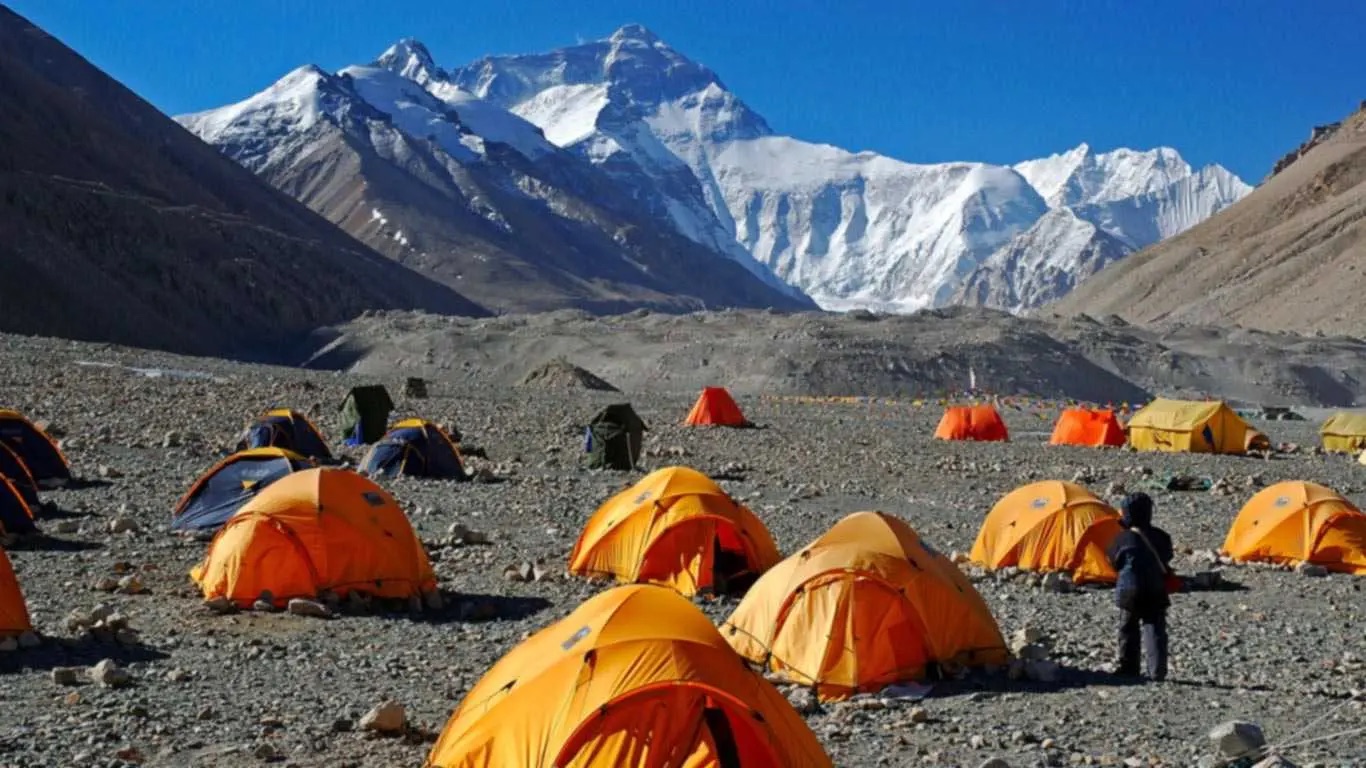
If trekkers do not want to stay in a local teahouse or luxury lodge, they can stay in a tent under the stars. Camping is mostly done by expedition teams climbing Everest. It is a thrilling and adventurous experience. Camping treks are fully serviced with staff that includes guides, porters, cooks, and kitchen staff who erect tents, prepare meals, and manage logistics. Tent camping is generally two-person, with a foam mattresses and high-altitude cold-rated sleeping bags. More expensive and logistically difficult than teahouse trekking, tent camping offers route and timing flexibility, greater privacy, and a feeling of being in touch with the Himalayan wild, especially where there are fewer lodges or for non-standard expeditions.
Food and Dining in the Mountains
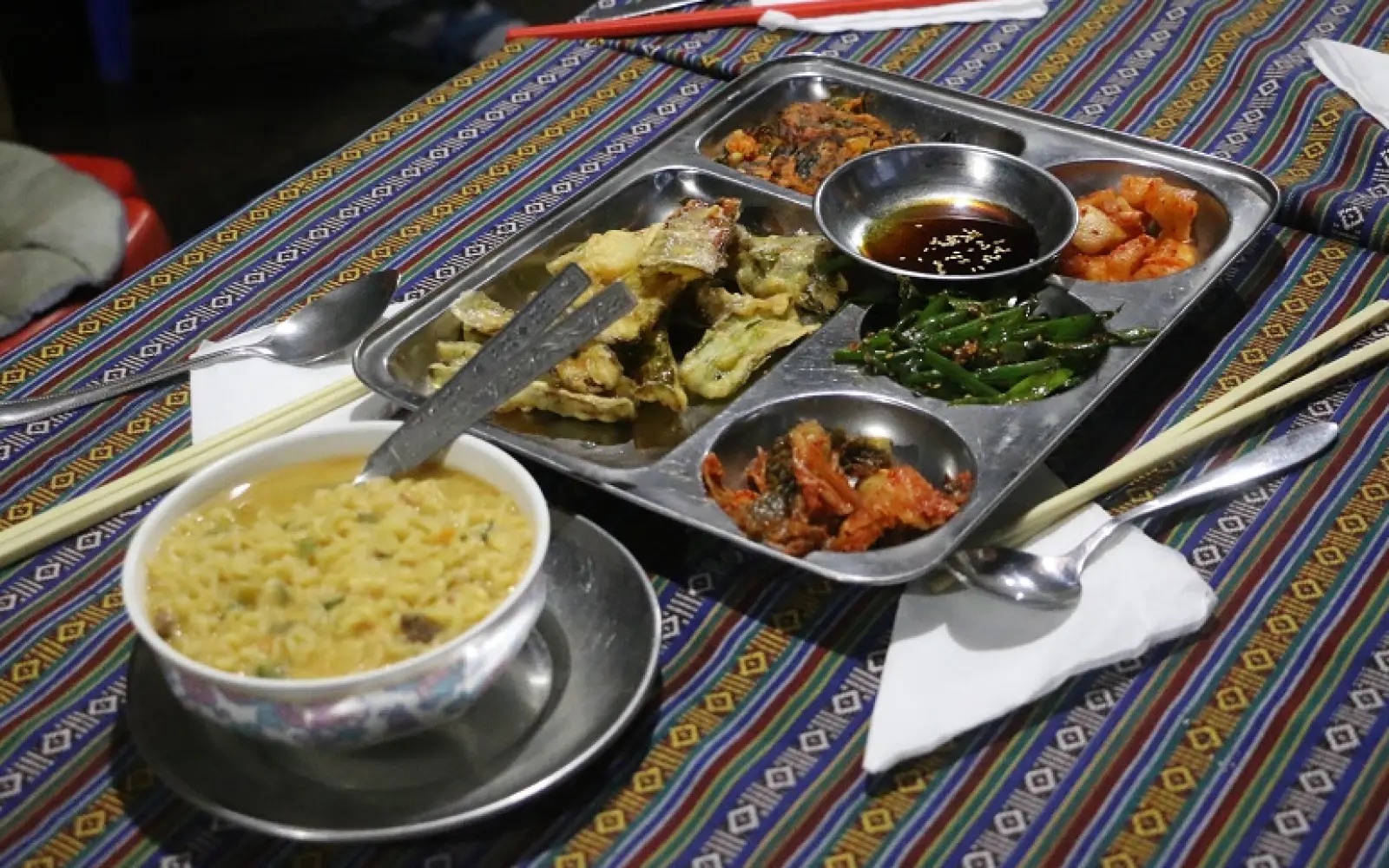
Normally, teahouses and lodges offer authentic Himalayan foods like dal bhat. As you ascend, the options for food are limited, but you’ll get the best food.
For breakfast, you’ll be eating Tibetan bread, eggs, hot tea, or grain soup or porridge, or anything available at the teahouse or lodges.
For dinner and lunch, you’ll be eating dal bhat, a full plate of rice, lentils, seasonal vegetables, and spicy chutney. You’ll be eating locally grown vegetables, rice, and seasonal fruits. The menu is determined by the community, and every accommodation place offers similar types of food varieties.
Also, you can have momo, noodles, pasta, fried rice, pancakes, or anything that the teahouse offers to you. There are also vegetarian and vegan options. Eating in a big dining hall along with fellow trekkers hits differently.
Price Ranges for Teahouse accommodation on EBC Trek
The price range of the accommodation varies depending on the type of accommodation, altitude, and season. In peak seasons, like spring and autumn, the price will be high. During the off-season, the price will be low.
It also depends on the accommodation place you choose. In a teahouse, the price will be low relative to Lodges or Hotels.
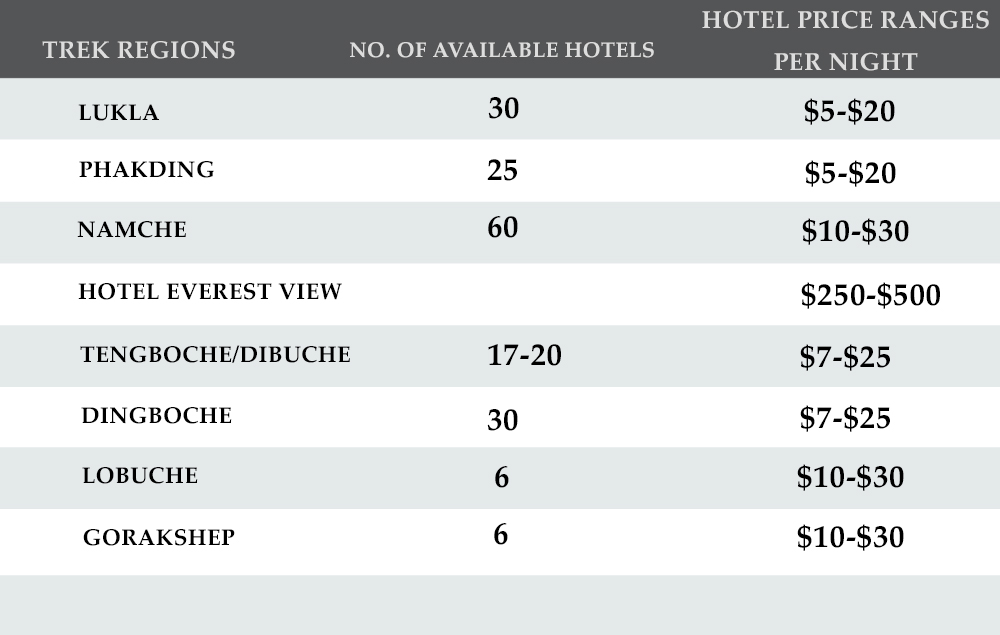
Tips for Booking EBC Trek Accommodation
● For easy reservation, always use a guide or porter to secure your accommodation on the EBC trek.
● Always book luxury hotels in advance.
● In high-altitude stops like Tengboche, Lobuche, and Gorakshep, arrive early if you want better rooms.
● Always eat meals in the same teahouse or lodge.
● Do not fully trust online booking of accommodation; make sure to confirm by calling them.
● Be friendly to the owner and staff of the hotel/teahouse. It will help to get better service.
● If you want extra facilities like a hot shower and electric service, pay extra money.
● During peak season, there will be less chance of getting a private room. So, prepare yourself for sharing the rooms.
● Have basic expectations in lodges/teahouses.
● Always respect local culture and customs.
Book in Advance
While trekking in the Everest region during peak season, you need to do pre-booking. If pre-booking is done, it will be easy for you to trek and stay in a teahouse. Otherwise, in peak season, in popular villages like Lukla, Namche, Dingboche, and Gorakshep, the teahouses are fully packed. If you are trekking with a guide, ask them to reserve the lodges/teahouses in advance. But during the off-season, the teahouse operates on a first-come, first-served basis. There will be options of teahouses to stay in.
But for luxury hotels like Yeti Himalayan Hotel, pre-booking is crucial. There will be limited rooms and high demand. So, plan your trek wisely.
What to Bring
Always carry essential items and gear in your bag while trekking in Nepal. Here is the list of things to carry in the EBC Trek:

● Moisture-wicking T-shirts
● Thermal tops and bottoms
● Fleece jacket
● Waterproof and windproof jacket
● Trekking pants
● Warm sleepwear
● Moisture-wicking underwear
● Warm hat
● Comfortable trekking shoes
● Trekking socks
● Duffel bag
● Backpack (40–50 L)
● Sleeping bag
● Trekking poles
● Water bottle and purification tablet
● Quick-dry towel
● Toiletries
● Sunscreen
● First-aid kit
● Documents
● Power bank
● Snacks
● Cash
Final Thoughts
Trekking to Everest Base Camp is more than just a physical journey — it's a cultural and personal adventure. Where you choose to stay along the way, whether in a cozy teahouse or a more upscale lodge, can deeply shape your experience. Each type of accommodation offers its own mix of comfort, authenticity, and connection with fellow trekkers and locals alike. As you plan your trek, think about your comfort preferences, your budget, and most importantly, approach each stop with respect for local traditions. Remember, every step you take is part of the story — not just the destination, but the journey itself is what makes it unforgettable. Safe travels and happy trekking!
Everest Base Camp Trek Everest Panorama Trek Everest Gokyo Lake Trek
Everest Luxury Trek Gokyo Lake Renjo La Pass Trek
